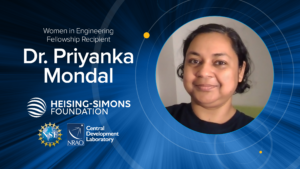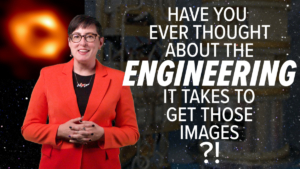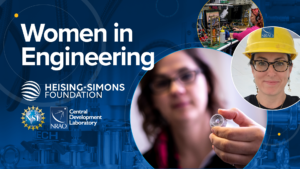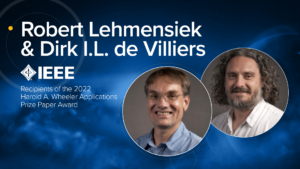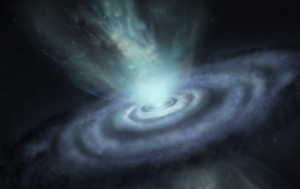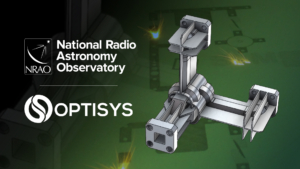Following a generous grant from the Heising-Simons Foundation, the Central Development Laboratory (CDL) at the National Science Foundation’s (NSF) National Radio Astronomy Observatory (NRAO) has selected their first recipient of the postdoctoral Women in Engineering fellowship, Priyanka Mondal. The Women in Engineering program increases opportunities for women to enter the field of radio astronomy through engineering pathways.
Baseline 14— Central Development Laboratory: The Magic Behind the Wonder
Radio telescopes are powerful tools that allow astronomers to study the Universe. We often read about the discoveries they make, but we rarely get a glimpse of the engineers and technicians that design and build these telescopes. Join our host Summer Ash as she talks about NRAO’s Central Development Laboratory (CDL) and how CDL helps make modern radio astronomy a reality.
NRAO’s Central Development Laboratory to Launch New Women in Engineering Program With Support from the Heising-Simons Foundation
Following a generous grant from the Heising-Simons Foundation, the Central Development Laboratory (CDL) at NSF’s National Radio Astronomy Observatory (NRAO) will soon launch an ambitious Women in Engineering program that will increase opportunities for women to enter the field of radio astronomy through engineering pathways. The program will include a postdoctoral fellowship and a co-op program for undergraduate and graduate students.
ngVLA Engineering Paper Selected for Prestigious IEEE Award
A team of engineers testing the design efficiency of reflectors for the National Radio Astronomy Observatory’s upcoming next generation Very Large Array (ngVLA) has received the Institute of Electrical and Electronics Engineers (IEEE) Harold A. Wheeler Applications Prize Paper Award.
Hey DUDE: Mysterious Death of Carbon Star Plays Out Like Six-Ring Circus
Scientists studying V Hydrae (V Hya) have witnessed the star’s mysterious death throes in unprecedented detail. Using the Atacama Large Millimeter/submillimeter Array (ALMA) and data from the Hubble Space Telescope (HST), the team discovered six slowly-expanding rings and two hourglass-shaped structures caused by the high-speed ejection of matter out into space.
NRAO and Optisys Partner Up to Produce 3D Devices for Radio Astronomy
Recent advancements in 3D printing (also known as additive manufacturing) for metallic structures make it possible to print all-metal electromagnetic devices—like antennas and waveguides—on demand. A new partnership between the National Radio Astronomy Observatory, headquartered in Charlottesville, Virginia, and Optisys, LLC, headquartered in West Valley City, Utah, will explore the potential for leveraging this technology for radio astronomy applications.


